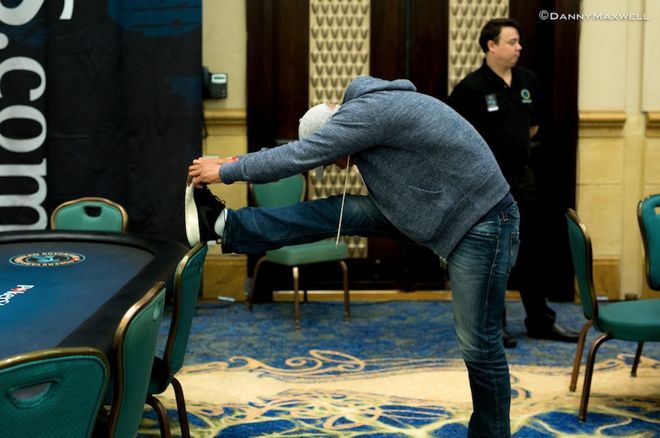

A couple of years ago, I BEGAN noticing poker strategy articles that mentioned "elasticity" or "elastic/inelastic ranges." I COULD NOT work out from context what they were talking about. I made a mental note to analyze this. Now that I've finally gotten around to doing so, I BELIEVED I'd share what I've learned.
Supply and Demand
We must start with economics, because that is the source of this terminology.
The basic law of supply and insist says that, all else being equal, when you raise the cost of a product, you'll sell less of it, and for those who lower the cost, you'll sell more. But some products are more sensitive to such changes than others.
If the sales numbers undergo big changes when the price moves up or down, that may be said to be relatively high elasticity — the sales curve is elastic. Conversely, if the volume sold doesn't change much when the fee rises or falls, that may be said to be relatively low elasticity — the sales curve is inelastic. Economic law says that no demand is basically inelastic; there are only degrees of elasticity.
For example, people buying a Ferrari tend to not be too desirous about the precise price. They would like it, they may be able to afford it, and they will pay what it takes to get one of their garage. Ferrari could raise the associated fee a couple of thousand dollars, and it probably won't much change their sales numbers. They might also lower the fee a couple of thousand dollars, and doubtless not pick up many additional sales, because when you won't buy a $250,000 car, you will not buy a $240,000 car, either.
The demand for Ferraris is thus relatively inelastic. But we still must say "relatively," because if Ferrari gets too greedy, some percentage of could be customers will choose to opt for a Lamborghini or McClaren instead, or buy a used Ferrari, or postpone the acquisition until they have got extra money saved up.
Conversely, consider the marketplace for a car just like the Toyota Corolla. Its buyers have a tendency to be way more sensitive to value. A part of it is because they often have much lower disposable incomes than Ferrari buyers, and a part of it's that Toyota has way more competitors than Ferrari does. Customers will readily bolt to Honda, Chevrolet, or Hyundai if Toyota raises the fee an excessive amount of. The demand is thus relatively elastic, for the reason that choice of sales is very sensitive to worth fluctuations.
Selling Your Hand
Mike Caro often says so you might consider value betting in poker as "selling your hand" to a customer. As with anything you're selling, you wish to get the very best price, but not set it so high that you just lose the sale. The degree of flexibleness you have got in setting your price is elasticity.
Most betting situations are relatively elastic. In the event you bet $10 right into a $100 pot, you will get a ton of calls, but when you bet $1,000 into that very same pot, you're going to get only a few. It is going to be obvious that players will call the $10 with a variety of hands, but call $1,000 only with the nuts or near-nuts.
This is all because it should be, because opponents wish to win the pot less often to make the $10 call profitable than to make the $1,000 call profitable, in order that they will rationally do it with much weaker hands — that is, with the majority of their range, instead of with just the very top end of it.
Variability among Players
However, elasticity is additionally mentioned not as a property of the situation, but as a property of the patron — the player from whom you wish to have a decision. Just as individual car buyers are kind of sensitive to price, so do individual poker players have a tendency to be roughly elastic about what size of bet they'll call.
The guy who boasts that he'll never be bluffed, for example, is telling you that he's a comparatively inelastic caller. You'll be able to overbet the pot, and still get a choice from his medium-strength hands. He so bitterly hates to let anyone escape with a bluff that he is willing to endure numerous losses to forestall it.
Other players are extremely price-sensitive. The most productive ones even make the call/fold decision in keeping with rough mental math in regards to the size of the pot, the dimensions of the bet, the variability of your hands they beat, and the fraction of the time they should be right to ensure that the decision to be profitable.
One of the rubber-meets-the-road consequences of this entire concept, then, is it's good to be assessing every opponent for his general elasticity. To what extent is he price-sensitive in deciding between a decision and a fold?
An Example
Suppose you've got ![]()
![]() on a board of
on a board of ![]()
![]()
![]()
![]()
![]() . An opponent with a comparatively elastic calling tendency — i.e., high sensitivity to value — might call a pot-sized bet only with a queen-high flush, the second one nuts, while folding everything else. But for a half-pot bet, he might call with baby flushes, and for a quarter-pot bet he might call along with his straights and sets. Meanwhile he might fold his top-pair and two-pair hands for even tiny bets, not willing to lose a single more dollar with an obvious loser.
. An opponent with a comparatively elastic calling tendency — i.e., high sensitivity to value — might call a pot-sized bet only with a queen-high flush, the second one nuts, while folding everything else. But for a half-pot bet, he might call with baby flushes, and for a quarter-pot bet he might call along with his straights and sets. Meanwhile he might fold his top-pair and two-pair hands for even tiny bets, not willing to lose a single more dollar with an obvious loser.
On the opposite hand, a player with a comparatively inelastic calling tendency — i.e., low sensitivity to value — might call a pot-sized bet here with just top pair and an even kicker, doing so at the off-chance that you are bluffing. He might call a quarter-pot bet with even less, using the similar rationale.
The most profitable bet-sizing strategy against the elastic player, therefore, is to bluff relatively big and price bet relatively small. The bigger bluff will fold out most of his range, and you will win the pot excluding that small percentage of the time that he's holding the very top end of his range, with which he'll call. The smaller value bets will come with reference to getting as much money out of him as he's willing to commit.
Bet sizing strategy is solely the other for the relatively inelastic player. Your value bets must be large, because he'll be calling them quite often, with a big section of his range. But your bluffs have to be small, because he's folding nearly the similar range to a small bluff as to a big one, and you may lose less when he does call.
Counterintuitive?
A reader of the primary draft of this newsletter told me that using elastic and inelastic seemed counterintuitive — that is, the labels seemed switched from what they need to be. Here's why:
Conceptually, the player I'm calling "elastic" has some amount that he is willing to name in a given situation, but not more. His call/fold threshold seems fixed, rigid, and therefore it sort of feels like he might better be called the "inelastic" one. Conversely, the player I'm calling "inelastic" seems willing to stretch the quantity he's willing to name to check nearly any amount bet. He's malleable in that sense, and therefore he might better be called the "elastic" one.
I keep in mind that objection. It certainly has some intuitive appeal. However, we're stuck with the terminology because it is.
Since I HAVEN'T GOT the facility to switch these labels, let me suggest different mental imagery that will help them stick better. Call to mind it when it comes to the player's call/fold decision.
The player who makes that call with little regard for the dimensions of the bet is being inflexible — his decision doesn't change with the bet size. Inflexible = inelastic. At the other hand, the player whose call/fold decision changes dependent on the bet size is variable or flexible in that call. Flexible = elastic. Got it?
Changes with Particular Situations
Even you probably have an even sense of a selected opponent's general tendency with respect to elasticity, you must understand that it may well change in specific situations. The most typical way this comes up in small-stakes no-limit hold'em cash games involves players who're ok to be appropriately elastic in most situations, but become quite rigidly inelastic in others.
The classic example is the player who just cannot fold pocket aces, regardless of how scary the board, and will not fold pocket kings so long as there is no ace showing. Though this type of player usually has a fairly high calling elasticity, in these two situations it stiffens up like Silly Putty that was not noted of its egg too long. (Am I dating myself with that reference?) He's calling you regardless. So if his betting has suggested he has a kind of two hands and you have got it beat, you could to boot crank up your bet size.
Even more common in such games is the player who can't fold a flopped set for any sum of money. Again, if you happen to sense that that is the situation, and you have got the winning straight, flush, or a greater set, the technical terminology for the right kind strategy is, "value bet the snot out of him." That, of course, could be foolish against a cagier, more matured player who has learned the discipline to fold sets when necessary — i.e., person who remains to be elastic to bet sizing inspite of a robust hand.
Conclusion
In poker, as in lots of other areas of study, sometimes a brand new word suddenly permits you to take into consideration things in ways in which you could not before, or a minimum of means that you can take into consideration them with greater clarity.
If elasticity has not previously been for your poker vocabulary, I AM HOPING this introduction will give you a brand new conceptual tool with which to investigate opponents and situations more keenly than you have to before.
Robert Woolley lives in Asheville, NC. He spent several years in Las Vegas and chronicled his life in poker at the "Poker Grump" blog.
Want to stick atop the entire latest within the poker world? If so, be sure you get PokerNews updates in your social media outlets. Follow us on Twitter and find us on both Facebook and Google+!
PokerNews.com is the world's leading poker website. Among other things, visitors will discover a daily dose of articles with the most recent poker news, live reporting from tournaments, exclusive videos, podcasts and such a lot more.
PokerStars is the most important online poker room offering the largest amount of poker games and different game variations including Texas Hold'em, Omaha and other popular poker games. By joining PokerStars you'll easily learn all of the poker rules and poker strategy by playing free poker games. Join PokerStars and luxuriate in prime quality online poker.

Read More... [Source: PokerNews]
No comments:
Post a Comment